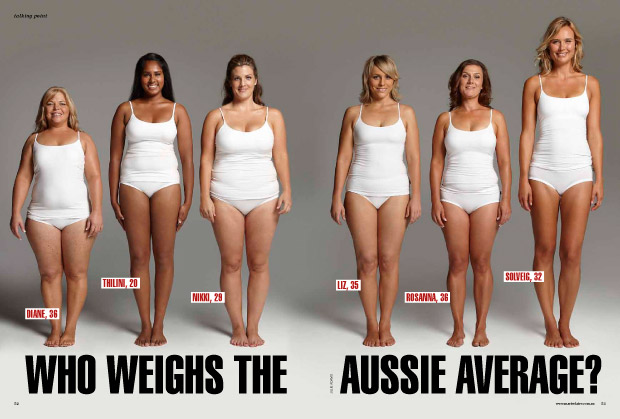American largest lingerie retailer, Victoria Secret suffered more than a
weeklong backlash over an advert campaign that placed the title “The
Perfect Body” over a group of svelte supermodels.



Advocates
against the campaign started a petition signed by more than 27,000
people requesting for the campaign to be scrapped and an apology to be
tenered. The petitioners argue that the ad campaign sends out an
unhealthy and damaging message about women’s bodies and how they should
be judged.
Clearly, those behind the campaign and the petitioners
are in disagreement about what the perfect body is. Their different
views on the subject matter, begs the question, what is the perfect
body? And who gets to decide what the perfect body is?
Women’s
bodies have changed over the past decades from being strongly built
strong for survival to a delicate and slender build. Our great-great
grandmothers were appreciated for their natural bodies.
If anything, they were more interested in enhancing their curves than reducing it.
It was a thing of pride and a mark of status to be voluptuous.

In
the south-south region of Nigeria, especially the Efik speaking
communities, corpulent women were regarded as more alluring, in good
health and wealth.
In order to look more attractive young women
were confined in rooms for a long period of time with no physical
activity during which they were made to consume large portions of food
whilst getting lessons in beauty, sex, etiquette and femininity from
older women.
The appreciation for full-figured women was not
limited to Nigeria alone. Voluptuous women were celebrated across the
globe. Paintings from the Renaissance era depicted them as the epitome
of sexy.
The Victorian era brought in a slight change in what was
considered the perfect body. During this period, sexy meant having the
tiniest of waistline. To achieve this look, women wore rib-breaking
corsets. The compressed waistline aided a more magnificent
derriere-Ghanaian actress Joselyn Dumas is the ideal Victorian sex bomb.
The new waist-training trend indicates the desire for a tiny waistline
is still on.
The hourglass figure transcended both the roaring 20s of the shorter hemlines and the Hollywood golden age of the 1940s.
The
swinging 60s however, drastically changed the views on sexy. This era
birthed the thin trend. Curves were out and by the 70s the thinking-thin
phenomenon was fully rooted. Women exercised more to get a more toned
and skinny body.
This trend is still the standard today even
though the average woman is not a size zero. The fashion industry
constitutes to cater for the minority. Instead of the majority who are
bigger and curvier than those on billboards and magazine covers.
Nollywood
actress Genevieve Nnaji’s re-launched clothing line that only goes up
to size 14 even though the average Nigerian women cannot fit into a size
14 shows the bias of designers even if it is not deliberate.
The
fashion industry in cohort with the media has pushed the stick thin
body as the perfect body on us. From Milan to Lagos skinny starved
models cascade down the runways in clothes suitable for 12 year olds in
the real world.
The perfect body is just an idea, which changes
over time. Thin might be trending now but, thin also comes in different
shapes and mother nature has made it impossible to have a set prototype
for the perfect body.
Only a handful of the women in the world
are 5”10 and above, with zero percent body fat and the same waist to hip
ratio. Therefore the perfect body should be how healthy the shape of
the body you have is, and how comfortable you feel in your body.
0 comments:
Post a Comment